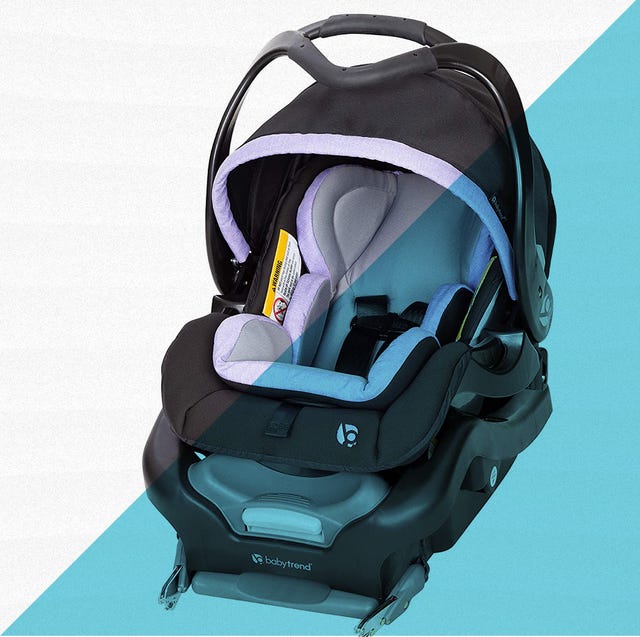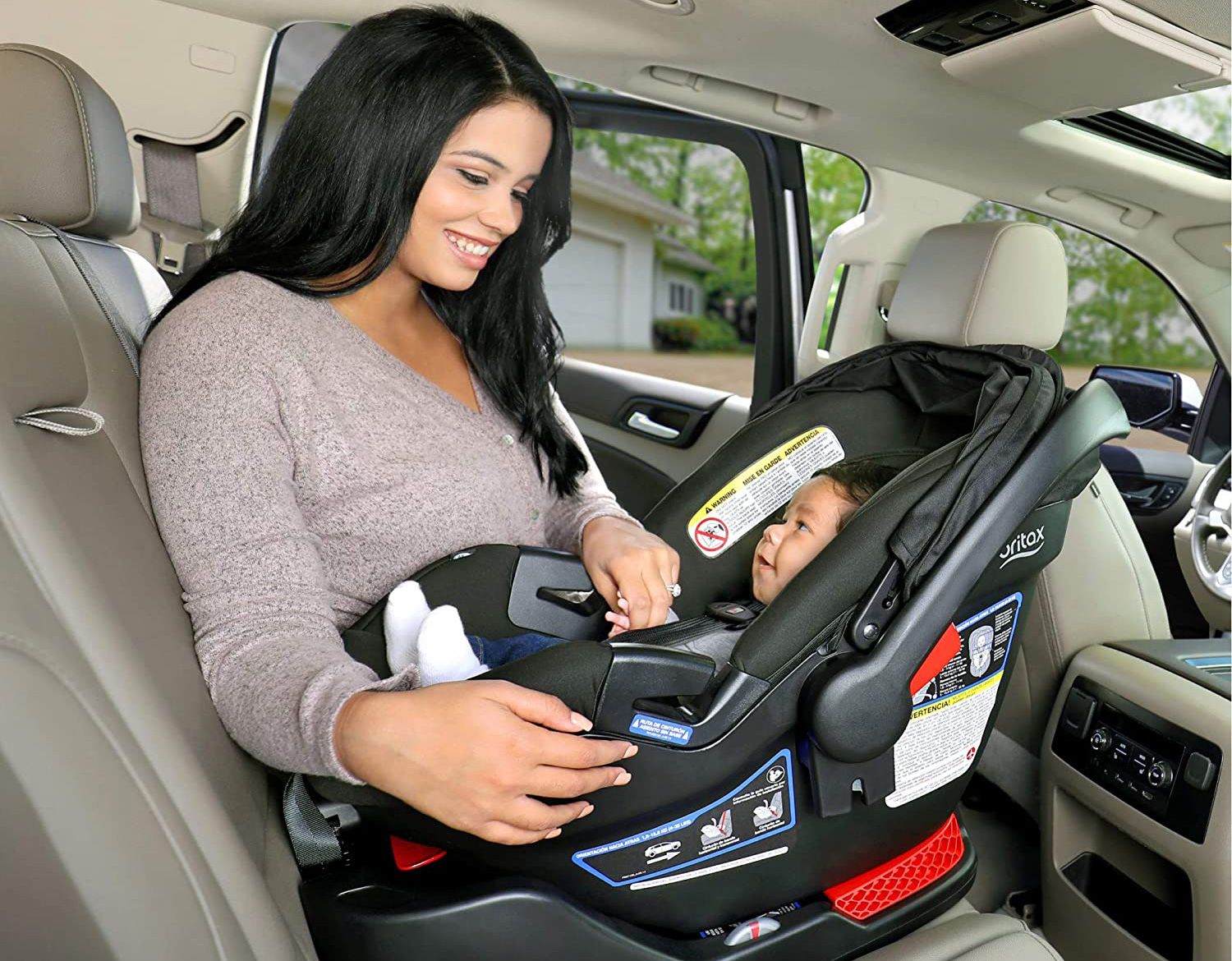

When you’re in your mid 30s, wedding registries turn into baby registries, and it’s easy to get caught up in all the stuff you need to care for a tiny human.
But perhaps the most important purchase you’ll make as a new parent is an infant car seat. After all, in most places, you won’t be able to leave the hospital without one. And it can be overwhelming to find the best infant car seat, especially in the age of user reviews.
Here’s what you need to know when it comes to finding the best infant car seat and our top picks.
If you’re shopping from a big-box store or from credible sellers online, you’re going to come across a handful of well-known brand names. These mainstream car seats have been tested against the NHTSA FMVSS 213 performance and design criteria for child restraint systems for children up to 80 pounds, explains Laura Dunn, highway-safety specialist for the occupant protection division of NHTSA.
“These performance standards don’t tell manufacturers how they need to design, but they’re the minimum performance standards that each car seat must meet to be safe,” Dunn says.
Manufacturers self-certify their products. Dunn’s organization randomly tests a sampling of U.S. car seats and booster seats, and has never come across a company that tried to sidestep the testing protocol.
The standards include requirements for labeling and instructions, flame retardant for fabric and webbing, buckles and release pressure, force needed to open buckles, anchor or seat-belt security, and weight and height limitations. Seats must also pass a 30-mile-per-hour frontal sled test to simulate a head-on crash.
Some manufacturers claim their infant car seat or booster seats are side-impact tested. Currently, NHTSA does not have a federal side-impact standard for child restraint systems. A spokesperson for NHTSA said the group is working to adopt a standard in 2022, with January as a target date for publishing a final rule.
“Manufacturers may not advertise their products in a manner that suggests compliance to a NHTSA side-impact test prior to the agency’s issuance of the standard,” the spokesperson told me in an e-mail. “If a manufacturer advertises its products as having been ‘side-impact tested,’ it’s referring to its own assessment, and not NHTSA’s testing.”
The other essential consideration is whether the car seat fits your car and that you’re able to correctly install and use it every time, says Ben Hoffman, M.D., chair of the AAP Council on Injury, Violence, and Poison Prevention, and a certified child passenger safety technician instructor.
“There is never a one-size-fits-all car seat,” Hoffman says. “The right car seat fits the family car and the individual child, and it’s one that parents feel they can use correctly every time.”
Expensive is not always better. When it comes to car seats, higher prices might point to more comfortable fabric, extra padding for comfort on the shoulder straps, or features that make installation and use easier, Hoffman says. “But a more expensive seat will not have been shown to be safer.”
Infant car seats, car seats, and booster seats aren’t cheap, but your child will be in them for years. Paying $350 for a seat your child uses every day for the next three years is 32 cents per day.
Speaking from personal experience, I definitely see a benefit to purchasing an infant car seat that clicks into a base. You can leave just the base in the car and tote the car seat around without having to wake a sleeping newborn. But, that means you’re purchasing an infant car seat, which lasts maybe a year, and then you have to buy the giant $200–$350 car seat.
Convertible car seats are the big, expensive models that your kids will fit into for years—up to 65 pounds for forward-facing and about 57 inches for maximum kid height. They’ll start rear-facing and then you can convert them to forward-facing before moving up to a booster seat.
Dunn says for smaller babies, the harness dimensions might not be small enough, and would then recommend a rear-facing-only seat.
After finding a seat that fits your baby, the top consideration is how easily you can operate the car seat. Does your car allow for anchors, which can mean easier installation? Or does it require a seat belt for attachment? Is the harness easy (for the adult) to operate?
Dunn recommends going into a store (even if you don’t end up purchasing a seat there that day) and asking to install a seat in your car to make sure you can do it. She says this is a common request, particularly at baby-specific stores.



Not surprisingly, used infant car seats and car seats tend to be significantly less expensive than new. And while you can safely buy used car seats, there are certain boxes to check, Dunn says. In fact, NHTSA has a used car seat safety checklist.
Dunn emphasizes buying from someone you trust completely. “You don’t want to use a car seat when you don’t know its history,” she says. For example, a car seat that has been in a car crash might have damage that you can’t see. If you decide to purchase a used car seat, Dunn says, follow this guidance:
Car seats expire for a reason. In some cases, newer models follow updated guidance and safety standards, Dunn says. Hoffman also says technology is updated over the years. Also, consider where the seats were stored. In environments with hot summers and cold winters, “the plastic goes through tremendous stress,” he says, while webbing can undergo wear and tear that degrades the quality. “The integrity of the car seat itself can be called into question.”
As if new parents don’t have enough to worry about, there are counterfeit car seats. The biggest red flag is a too-good-to-be-true price for a brand name, Dunn says. Another issue is noncompliant seats: not counterfeit, but which don’t meet test standards.
Car seats that are noncompliant are commonly found on online retailers like Amazon.com (use the checklist mentioned above), and they tend to be very inexpensive. (Dunn said the NHTSA monitors online retailers to help ensure products meet standards.)
Take your car seat to a certified child passenger safety technician for proper installation; they’re learning how to determine if a seat is fake or noncompliant, Dunn says. “Your seat needs to have labels in English and Spanish, a registration card, and a retainer clip or chest clip. A non-American phone number is a red flag.” If any are missing, return the seat promptly.
As a parent of two—a 4-year-old and an almost 2-year-old—I’ve done my fair share of research for my own purchases, but for this buyer’s guide I dug even deeper, speaking with Ben Hoffman, M.D., a pediatrician from the American Academy of Pediatrics (AAP), and Laura Dunn, a highway safety specialist with the National Highway Traffic Safety Administration (NHTSA), the organization that creates standards for car seat testing.
I considered price, product longevity (will it grow with your kids?), ease of use, comfort (for babies and parents), and special features.
This list includes models I’ve used, which covers half the products highlighted, and those which close, trusted parents have used. We also dug into consumer reviews for the full picture.
In specs, I highlight max weight requirements because babies and kids tend to hit those before they hit max height requirements. But be sure to familiarize yourself with both for safety and compliance.